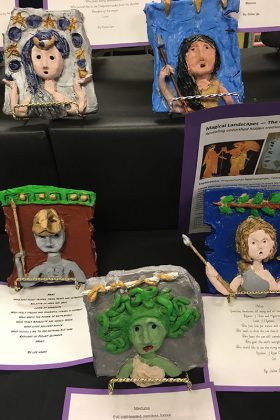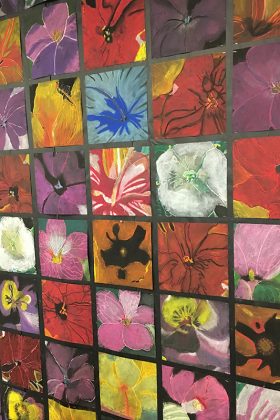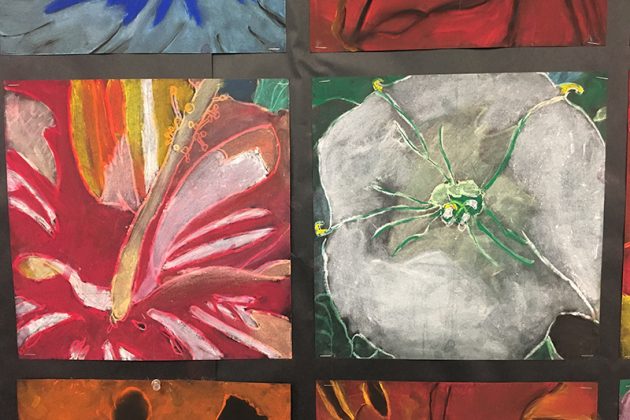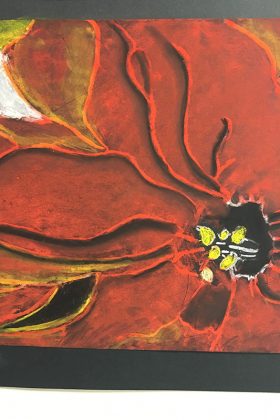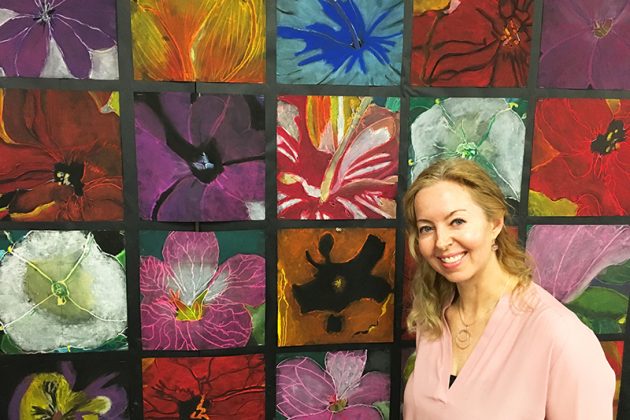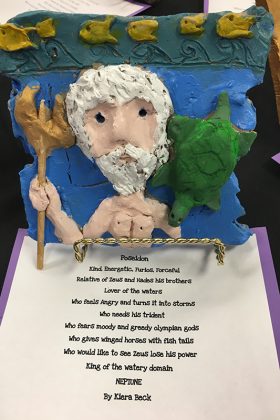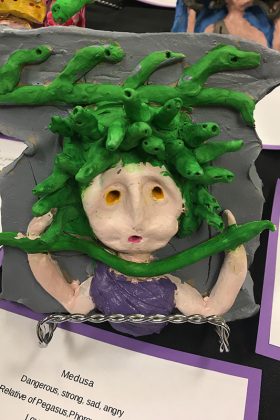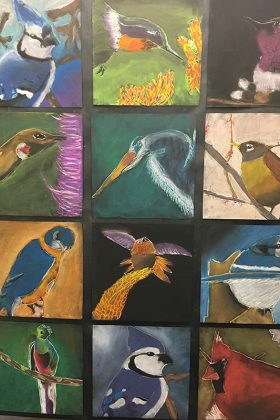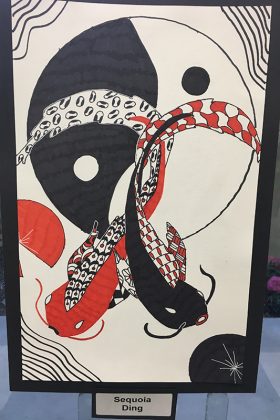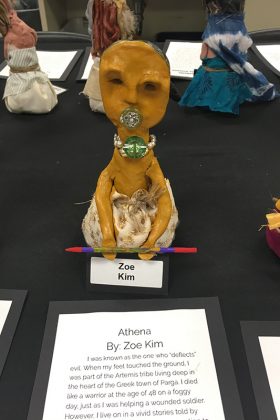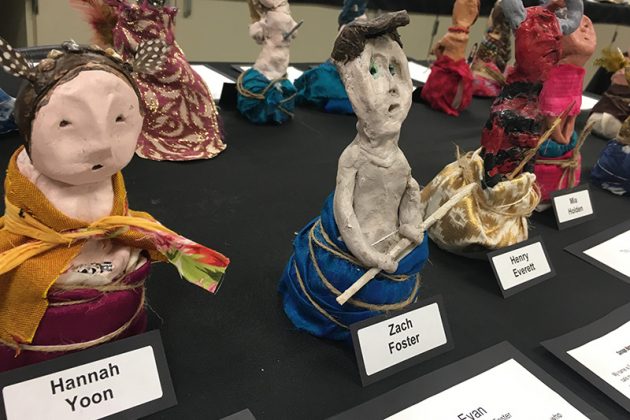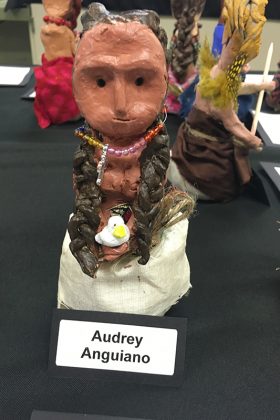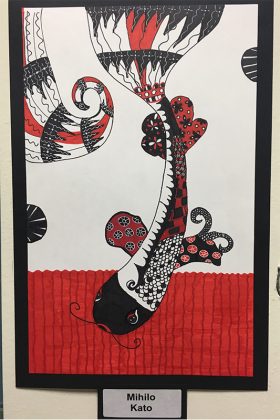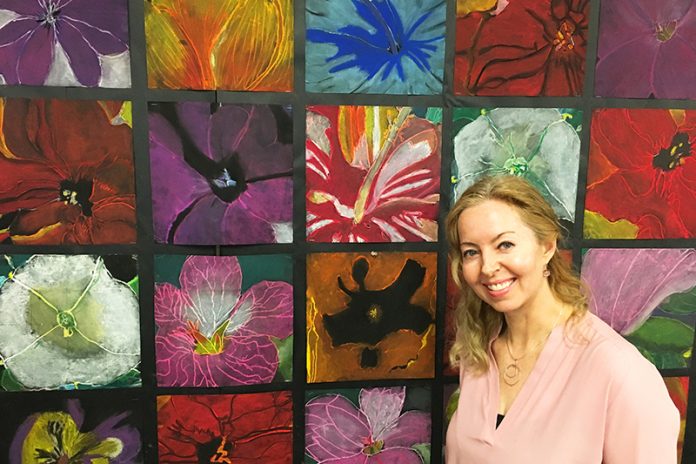
I managed to corner visual arts teacher, Sarit Swanborn, during the recent Open House at Arroyo Vista where the students’ artwork could be seen in every single room on campus reflecting Swanborn’s influence on every student. She teaches art programs in 13 week rotations at each of the three elementary schools in South Pasadena and Mrs. Swanborn’s name is one heard on the lips of every student across the three campuses as their beloved art teacher. I know one such student personally, who often engages his parents in art projects at home based on what he’s been doing at school with Mrs. Swanborn.
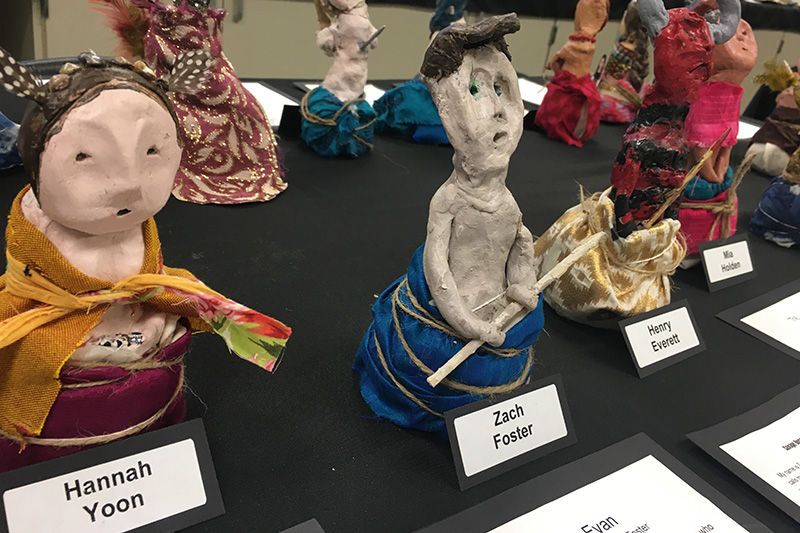
I am amazed as I look at the various pieces on display and can’t believe these are made by elementary school age children. When asked about the program Swanborn says “I strive to connect to the national and California visual and performing arts standards, so at each grade level from T-K through 5th grade, which is my domain with the children, it is important that they learn specific skills and concepts that match their developmental and cognitive abilities.”

The students are therefore exposed to specific visual arts medium at different age levels. Within that, there is an academic purpose to these studies but Swanborn wants it to be engaging and stimulating for the students, to hold their attention and fascination. Swanborn says she tries to connect the work to things the children are excited about such as fantasy, nature, mythology and real world relevance. The idea is to create a robust, dynamic and diverse visual arts program that develops from T-K, on an arts continuum, through 5th grade before they enter middle school.
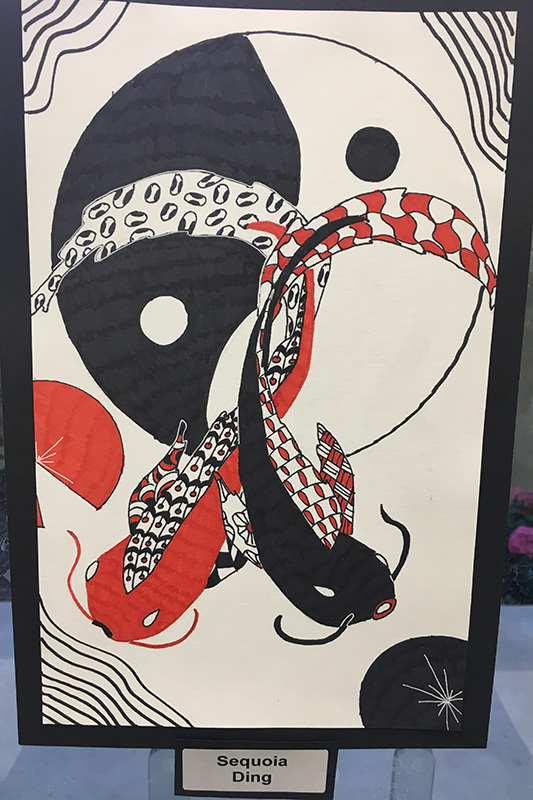
Swanborn says “mythology seems to be a 4th grade fascination; these students know more about Greek mythology than most adults. They’re voracious readers and they absorb the information like sponges so why not do an art project with three dimensional sculpture where we can explore Greek mythology and they can choose a certain god or goddess that they’re inspired by? 5th grade had Egyptian mythology which was perfect because they study ancient civilizations in 6th grade, so it whets their appetite for what’s to come.”
For many students, art offers a way into subjects and into history, “living history” as Swanborn explains. “They’re able to be very expressive but also understand there are historical roots that they can build upon and carry over to other subjects.”
During the 13 weeks, the students receive four complete lessons exploring two-dimensional mediums from acrylic and watercolor painting, chalk pastel work, charcoal pencil, India ink, and three-dimensional ceramics, sculpture and wire sculpture.

Swanborn would like to see the program grow in many ways. More than anything is time. “Art is not a race” she explains, “what is cut short right now is the ability to reflect on the work and learn from one another; to delve into their takeaway. The reflective piece is missing at this point as well as group presentation because we run out of time. Art is really about quiet experimentation and exploration and that’s very hard when you finally get to that place and the class is over. I want them to have more time to develop skill sets that intertwine with the exuberance of freedom of choice and expressive works of art.”
More time for art exploration? From the adoring smiles from the children when they see her to the sincere expressions of thanks from the parents, all wanting a photo of Mrs. Swanborn with their children, I would say these families most certainly agree.















.png)




